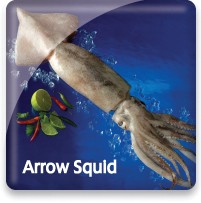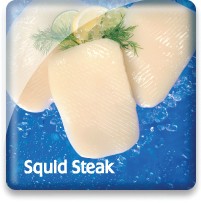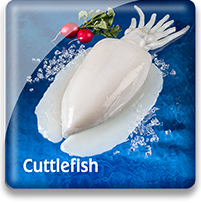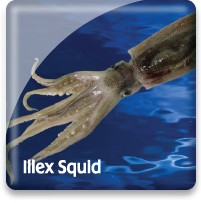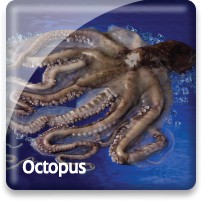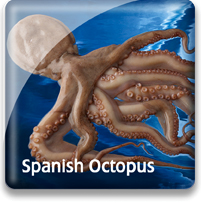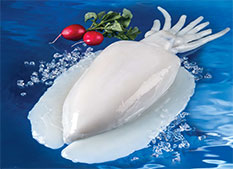
Cuttlefish

Market Name: Eating QualitiesCuttlefish is a versatile product that is not strongly flavored, but considered by many to possess a kind of sweetness. The meat is tender and succulent. Sea Port’s Cuttlefish are totally cleaned with body and tentacles attached so there is no waste when preparing your favorite recipe.
   |
Description & CharacteristicsSea Port’s Premium Cuttlefish are an exotic addition to any restaurant menu whether white tablecloth, sports bar or take-out operation. When you select our premium Cuttlefish, you will find a flavorful, tender offering that resembles squid.
Cuttlefish are cephalopod mollusks similar to squid with eight arms, two tentacles but differing by having a stubby tubular shaped body that resembles a football that has a unique internal shell called the cuttlebone. The main body of the cuttlefish can range from two to sixteen inches long depending upon the species and age. Sea Port’s Cuttlefish average about 5-7 inches in body length and are totally cleaned with their cuttlebones removed. Cuttlefish live for approximately one to two years, are fast growers, but are generally much less fecund than squid. Sea Port sources wild caught Cuttlefish from the Indian Ocean.
Cuttlefish ink is used as a dye and flavoring in various industries.
Other Resources |
Handling Instructions for Cuttlefish
Cuttlefish should be stored frozen at or below 0°F (-18°C) and then thawed properly when ready to cook. The frozen shelf life of our block frozen arrow squid is 24 months and 18 months for IQF. Links to proper seafood handling instructions: NOAA - Fish Watch: Handling Seafood and A Consumer Guide to Safe Seafood Handling.
Thawing Cuttlefish
Cuttlefish should be thawed under refrigeration between 33°F and 39°F until it is completely thawed. The thawing time is dependent upon if the arrow squid is IQF or block frozen. IQF arrow squid will thaw within 24 hours and block frozen will take up to 48 hours or longer. Faster thawing can be accomplished by placing squid in a colander and running under cold water or by placing squid in a plastic bag and submerging in a cold water bath until thawed.
Important Instructions for Cuttlefish
Upon thawing Cuttlefish, clean and gently rinse with cold clean water. Thawed Cuttlefish should be used immediately or stored under proper refrigeration (33-39°F) and totally consumed in 1-2 days. Squid in general has a relatively short thawed shelf life.
Cooking Tips
Cuttlefish should be cooked very quickly to avoid becoming rubbery in texture (two minutes or less at high heat). If your recipe calls for a slow cook process or you want to include arrow squid in a seafood cioppino, then be sure to cook it for 20+ minutes to achieve tenderness. Link to cooking tips and recipes.
India
The most populous democracy in the world, India has 1.2 billion people living in an area that is the world’s seventh-largest land mass. Bordering the countries of Pakistan, China, Nepal, Bhutan, Burma, and Bangladesh, India includes breathtakingly beautiful mountainous regions, plains, rivers (such as the legendary Ganges River), and valleys—and a coastline of 4,700 miles.
Within Indian marine waters, commercial species such as mackerel, sardines, shark, perch, tuna, shrimp, and cuttlefish are some of the main species harvested. Freshwater fish include carp and catfish and there are several species of brackish water fish.
India’s Exclusive Economic Zone (EEZ) encompasses more than 2 million square kilometer, so there is a huge potential within India, provided that the fishery is managed to thwart overexploitation of the resource.
Top export items from India include frozen shrimp (the dominant seafood export), and frozen lobster tails, to name a few.
|
*Click here for an explanation of our Sustainability Spectrum Sustainability AssessmentSea Port sources its Cuttlefish from India. Because Cuttlefish species have relatively short life spans and grow to reproductive age quickly, their populations are thought to be somewhat resilient to moderate levels of fishing pressure and long as they are not targeted during mating times. Cuttlefish are also much less fecund than other cephalopods such as squid and octopus so overfishing must be guarded against. The short life span and unpredictable nature of factors such as egg survival and the influence of environmental conditions make it difficult to assess most all Cuttlefish populations using conventional stock assessment methods. In many cases, effective management of Cuttlefish fisheries is lacking. Additionally, certain Cuttlefish fisheries also carry a risk of severe habitat impacts from the fishing gear used (e.g., bottom trawling on sensitive habitats such as cobble and coral). Improvements in data collection and management are necessary to mitigate the risk of negatively impacting populations through overharvesting. There is a growing interest to source Indian Cuttlefish that is caught using traps because of the reduced negative impacts to the ocean floor habitats and the increased selectivity of this method that avoids unwanted bycatch.
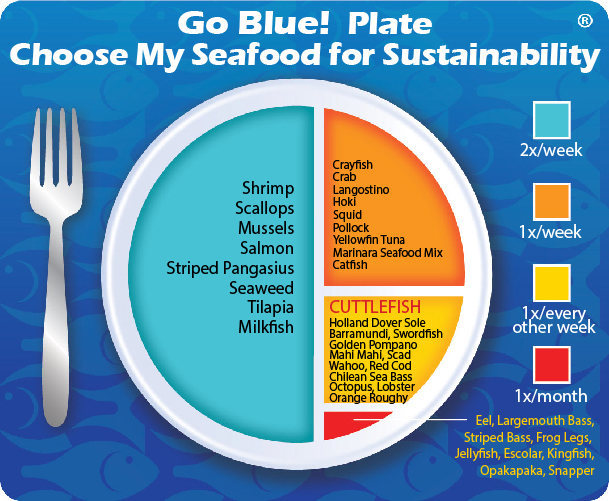
Environmental Impact: Moderate to Moderately HighBecause population fluctuations seem to be closely tied with environmental factors, year to year Cuttlefish biomass is difficult to accurately predict. Management of the resource is inadequate in many major Cuttlefish fisheries. Additionally, some Cuttlefish are caught by bottom trawling, which can negatively impact ocean floor habitats.
Sustainability Improvements NeededImprovements in the amount and types of data collected are needed in order to accurately establish fisheries trends and further develop stock assessment models specific to Cuttlefish. Specific management measures for Cuttlefish also need to be developed in many fisheries in order to prevent overfishing. Research into mitigation of habitat impacts by bottom trawling (e.g., gear modifications) is also needed. The greater use of pots and traps may also improve the sustainability of the Cuttlefish fisheries of the world.
Actions that Sea Port is UndertakingSea Port is requiring that their suppliers provide fishing vessel identification (when available), catch methodology, and catch area information. In doing so, Sea Port may be encouraging the Cuttlefish fisheries to collect additional harvest data, which could set the stage for future fishery management improvements. Sea Port is also encouraging the greater use of pots and traps in this fishery. Sea Port believes that, in aggregate, choosing from a diverse variety of seafood is better for sustaining the world’s seafood resources and that Cuttlefish should be a part of this variety. We created the sustainability assessments for each of our seafood items in order to reveal the existing and potential environmental impacts and risks that are associated with producing them for human consumption. This allowed us to establish the starting position for each of our seafood items along our progressive Go Blue! Seafood Sustainability Spectrum®. These assessments are only a single snapshot in time and because of this, we will continue to assess and update the critical sustainability needs associated with our supply sources and issue updates to the Go Blue! Seafood Sustainability Spectrum® as needed. There is a growing global awareness for the need to assure the sustainability of farmed and wild caught seafood and because of this; all around the world positive changes are rapidly occurring at all levels of the seafood supply chain. We will continue to spread this growing awareness and work with our many industry partners to improve the sustainability of all seafood, which we believe is the ideal protein of choice to feed an ever growing world population. Our Go Blue! Seafood Sustainability Spectrum® serves as our compass and yardstick as we strive to move all our products forward to becoming more sustainable. Please join us in this committed quest and Catch Our Wave® to sustainability by choosing a diverse variety of responsibly produced seafood as part of your diet.
|


